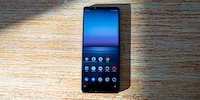
Testing the Sony Xperia 1: a clear message, a clear path
Sony is going for gold. With the release of the Sony Xperia 1, the company is debuting a smartphone that has a lot to offer, but hasn't quite got where it wants to go. Still, a very solid start.
The Sony Xperia 1 is good. It's not perfect. But good. Sony can be proud of their phone. The company is showing its colours and making a clear statement on how it imagines a smartphone. In order for the following review to make sense, I'll have to look into recent occurrences and explain the situation from which the Xperia 1 emerged.

One thing to start with: when it comes to consuming media or the professional camera, the Xperia 1 is at the forefront.
Remembering lost glory
Many moons ago, Sony was the smartphone brand for when you wanted a really good camera. But eventually, the rest of the pack caught up. Google rocks the show when it comes to artificial intelligence (AI) behind the camera. Pixel smartphones can now take pictures with one lens, while others struggle to keep up with three. Huawei can take pictures of the moon similar to ones taken by telescopes. And Sony? They got lost somewhere in the mix, missing one or two innovation cycles.
The result: the only failing division at Sony is its mobile department. their profits are in the far negatives and Sony is haemorrhaging money. A merger with the camera, TV and audio divisions is meant to bring relief and innovation to the struggling mobile sector. Finally, Sony Mobile can also access advancements in the camera division. These being CineAlta for filmmakers and Alpha for photographers.
The Sony Xperia 1 is the first step in a new direction. A phone burdened with Sony's big expectations. A «make it or break it» phone. It contains many untested technologies from divisions that have never dealt with mobile devices before. Very risky.
But worth it.
The Xperia 1 and its strange buttons
Innovation and risk already begins in the design of the hardware. The Sony Xperia 1 is long. Really long. But it's not very wide. The 21:9 screen aspect ratio does make the Xperia 1 look slightly distorted.
All buttons are on the right edge, allowing for simple thumb control for right-handed users. The fingerprint scanner is located between the volume button and the power button. The dedicated camera button is further down. Strangely enough, you can unlock the phone and activate the screen with your fingerprint scanner, but you can't turn it off. For this you need the separate Power Button. Why? You could integrate the scanner into the power button. Other phones do that. Sony's even done it themselves.
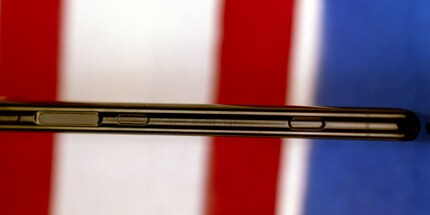
At least the dedicated button showed me which direction the phone was going for. So I'll write my review with a special focus on this phone's goal: media production and consumption.
The screen: 4K to the max
In a non-professional sense, the screen is clearly this phone's highlight.
Not only is it above average in size with a 6.5-inch screen diagonal. The 1644x3840 resolution comes dangerously close to the 4K limit of 2160x3840 pixels. If Sony had wanted to get 4K right, the Xperia 1 would've had to be wider. This 643 pixel per inch (ppi) density doesn't just make the image on your Amoled screen beautiful, but spectacular. Youtube videos look razor sharp, making it painfully clear why 4K is the gold standard for screen resolution and why smartphone manufacturers want to achieve it. It's what you want. You may not know it yet, but believe me. I also didn't know it yet, but now I look at other phones and think «would be better with 4K». Even if the Xperia 1 doesn't quite reach true 4K.
This is only supported by the integrated speakers. You'll be hard-pressed to find any video that doesn't blow you away with buttery smooth tones or powerful waves of sound. Songs have bass, treble and mids. The Sony Xperia 1 never rattles or peaks. This phone had me watching videos because I wanted to and not just because I didn't have a TV or PC at hand at the time.
No more 3.5mm audio jack Why?
If you work with cameras professionally, such as video producer Stephanie Tresch and I, you'll be impressed with the Xperia 1, but you'll have questions. On the hardware side, one glaring fault sticks out: where did the 3.5mm audio jack go? Not a big problem in daily music consumption, but when you're filming, the on-board microphone of any smartphone is simply not enough. Which is why external microphones exist. We use Rode products, but Sony also manufactures its own microphones, be they bone or shotgun microphones.
All useless.
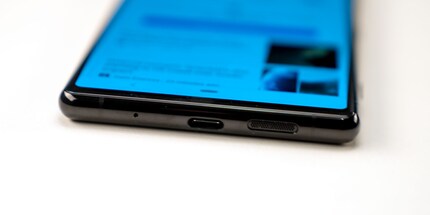
Sony, I really like how great filming with the Xperia 1 is. But it's still not worth giving up a 3.5mm jack for. Stephanie and I immediately came up with three alternatives.
- A decent Bluetooth microphone or something similar.
- Dongle, which also works with microphones.
- A 3.5mm jack.
Otherwise the Xperia 1 will never be used for anything more than filming B-roll. B-roll being content put into a random folder that's only used when we don't have anything better.
Too bad, then the Xperia 1 does have what it takes to become a good movie making machine. One detail is especially useful to Stephanie's work. The Xperia 1 films in 21:9 , but Youtube and most screens display content in 16:9. In other words, there's some free space on both sides of the screen. You can use this footage in postproduction to create a fake pan. This may sound irrelevant or useful, but it can make a video go from average to good. It's always easier to trim footage than to add more in.
CineAlta: software truly worthy of the name «professional»
Pictures with the normal camera app are overwhelmingly adequate. You'll never win a prize or anything, but the pictures are razor sharp. But that won't do for professionals. This isn't due to the hardware, but the software, which is extremely bare bones and solidly in the upper average. Nothing that can't be fixed with an update, but still. But professionals need their phones to capture RAW data files. Stephanie and I are still hoping for that update. But in the meantime, there's a very promising app on the horizon. Sony's almost hiding it in the operating system under the name «Cinema Pro». Come on Sony, put it on your home screen in bold letters. One big, beautiful word: CineAlta.
Then Cinema Pro uses technology from Sony's professional camera line CineAlta. The steep learning curve is more than worth it. Don't worry, the normal camera app can also capture videos, but only using the default AI. The CineAlta app allows you to turn your video from «so so» into professionally useful data. In 10bit, but unfortunately not in 4k/60fps. You can, of course, set your colour temperature according to presets. The shutter speed setting is more interesting. It contains various wacky presets. Are these the ones used in those old CineAlta cameras? We film our videos on a Sony a7s ii or the Sony a7iii. Those have conventional shutter speeds. CineAlta on the other hand thinks that shutter speeds around 172.8 and the like are completely fine. Sure, we can work with them, but we're still wondering how they came up with these figures.
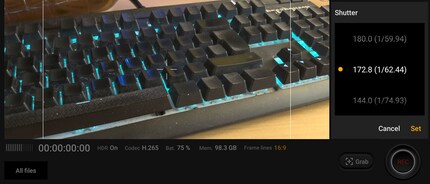
Still, we need to pay close attention to which Xperia 1 footage we use exactly because we usually only use conventional shutter speeds. This clash may lead to occasional speed distortion of the footage during post-production.
Something that is greatly improved on the other hand is the manual focus. Not only is the hitbox – the region on which the screen accepts your fingertip as the focus – big enough. Most people will also hold the camera in their right hand to use the camera button. Which is why the focus is on the right. Thanks to its length, you can comfortably hold the phone between your fingers firmly and use your index finger to operate the camera button while adjusting the focus with your thumb. Good job Sony. Props to you.
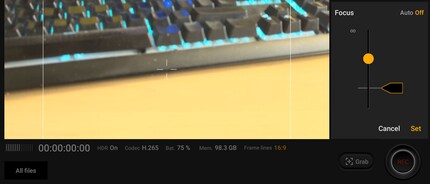
Nevertheless: There are things missing, but nothing that can't be fixed by an update. Why isn't there an option in the normal camera app to switch to CineAlta? Why doesn't the Xperia 1's blue light filter turn off automatically when working in the CineAlta app? Where's 4K/60 fps?
And forgetting about the camera system for a moment: why are there tutorials everywhere in my otherwise minimalistic Android set-up? I can't seem to get rid of them either. And why don't the completely unnecessary side panels work either?
Clearly, Sony hasn't arrived at their perfect smartphone end goal yet. But this is certainly a good start. It's also an extremely necessary evolution for smartphones. The Xperia 1 makes the world of smartphones more exciting, showing us that there's more to it than just better selfies and AR-Emojis or other gimmicks. The Sony Xperia 1 shows us that smartphones are good, fast and strong enough for professionals to work with.
Stephanie and I agree: we could shoot even better videos given more time, more experimentation and more experience with the phone. Let's see what happens. One last tidbit to end on: you can easily immerse the phone in water and record underwater videos thanks to IP68 certification. We don't know exactly what that's good for, but we'd rather have a phone underwater than a Sony a7iii.
And that’s it for today. Am I the only one who's really happy that they dropped the extremely stupid XZ from this phone's name?
Journalist. Author. Hacker. A storyteller searching for boundaries, secrets and taboos – putting the world to paper. Not because I can but because I can’t not.


